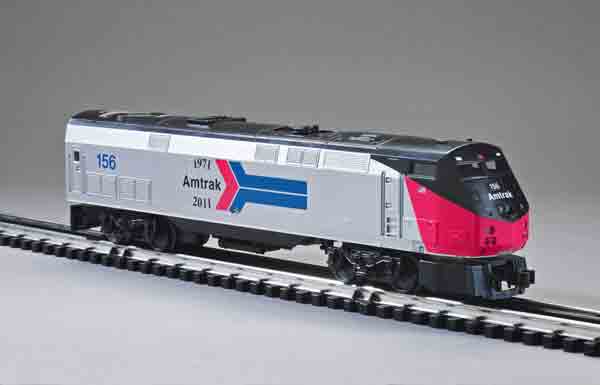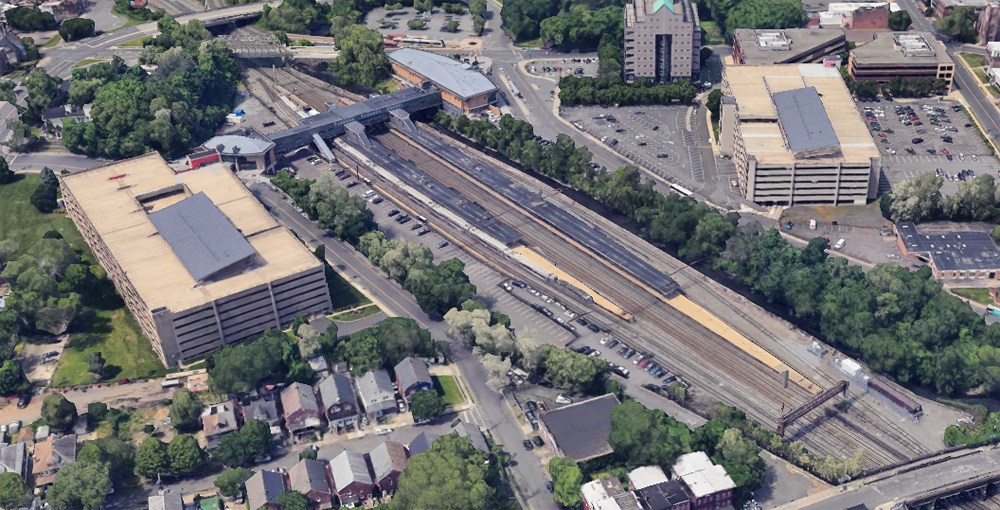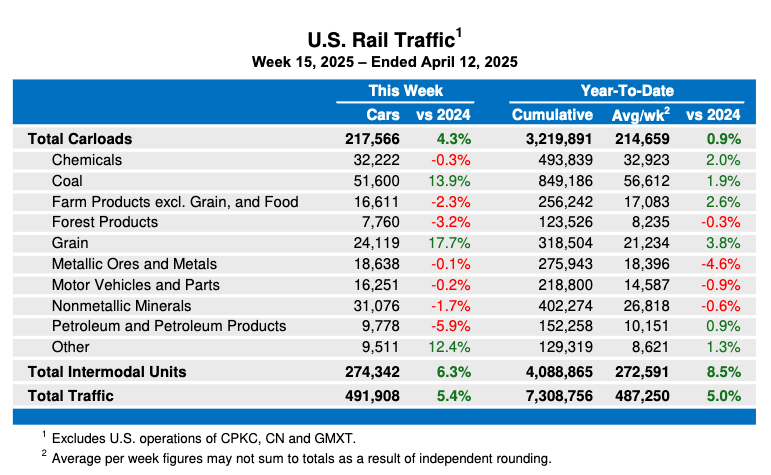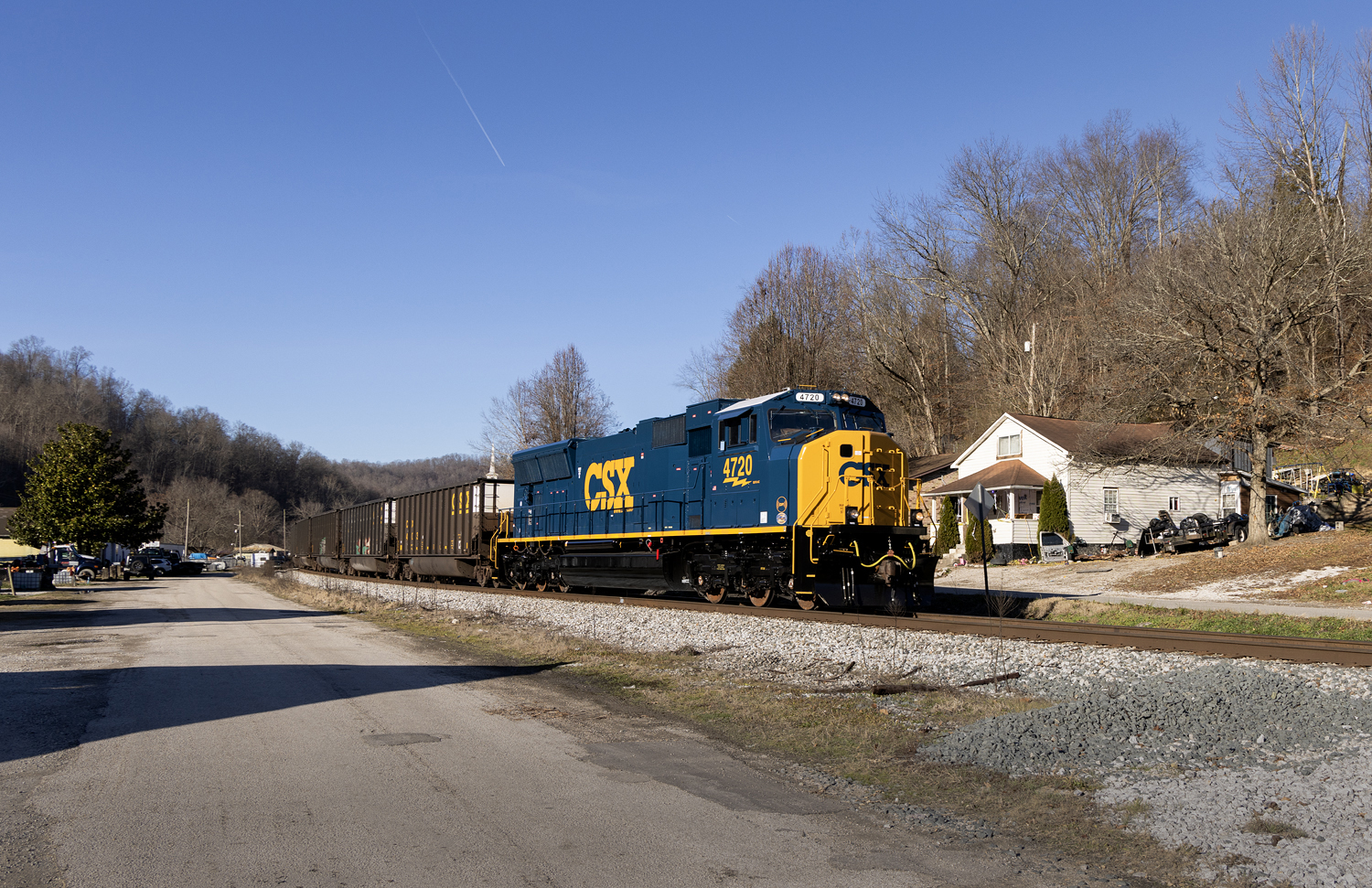Price: $419.95 (no. 23302) Min Curve: O-31 Cmd Low: N/A Cnv Low: 19.8 smph High: 83.6 smph Drawbar pull: 1 lb., 4 oz. Features: Two motors, couplers, True Blas Plus sound Current production run: Amtrak Phase I Anniversary, Amtrak Phase V, and New Haven (Conn. Dept. of Transportation).
Two of the first Amtrak diesels were the six-axle SDP45, which had a knack for derailing, and the venerable F40PH – a solid performer for many years.
But Amtrak’s General Electric Genesis locomotive (Also called the AMD-103 for “Amtrak Diesel 103 miles per hour”), is literally a “one-size-fits-all” locomotive, designed to meet clearance restrictions on all Amtrak routes. The body was designed by Amtrak’s Cesar Vergara to be more streamlined, lighter in weight, and more fuel-efficient than the F40. Vergara’s design made extensive use of recessed or flush-mounted function points, such as strobes and number boards on the real thing.
More than 300 of the 4,200-horsepower diesels were built between 1992 and 2001. The Genesis locomotive has been operated by Amtrak, Metro-North, Shore Line East, and New Jersey Transit.
Opening the box
I’ve been a fan of the Williams Genesis model since it first came out. I bought two from an earlier run, spray-painted them black, and slapped some New York Central decals on the sides. They’ve been hauling 30-car freights ever since!
The unmistakable appearance of the Genesis, with its sharp, angular lines, has always appealed to me. While unmistakably modern, it is a refinement of, rather than a radical departure from, the traditional locomotive carbody style.
The pilot is metal and angular. It has cast-in representations of brake and multiple unit (m.u.) control lines. Both the front and rear couplers are thumb-tack-style operating couplers.
The nose is also angular and has simulations for m.u. receptacles. There are lenses for ditch, classification/marker lights, and headlights. There is no interior decoration in the cab, although the windows have clear panes.
The flanks of the locomotive have a good representation of the detail points of the Genesis. Well below the side cab windows you find seam, access hatch, and latch detail.
The cab steps are formed into the side of the body, and the handrail and door handles are cast in as well. There are solid screens on the upper, inward-angled portions of the side. There is a cast-in access door roughly midway down the shell, and a door with handrails, door handle, and window at the rear of the cab.
The roof mirrors the real Genesis with an exhaust stack and a radiator fan, both neatly recessed below the roofline. The only things poking above the roof are the horn and the faintest bumps representing the multiple cast-in lift rings.
You will notice no fuel tank tucked beneath the frame. This is because the Genesis fuel tank is integrated to the frame, and there are two tanks (with two compartments each) that fill and empty equally. This is an improvement for grade crossing safety, since it is less likely to rupture in a collision than a tank hung below the frame.
The die-cast metal trucks are good renderings of the Krupp high-speed trucks used on the Genesis.
When I first saw the Amtrak Heritage paint scheme, I was surprised at how much I missed it. I was equally surprised to learn that the last locomotives with the “Bloody nose” paint scheme had all been repainted by 1981. Time sure flies!
The contrast between the bluish-black of the rooftop and the red of the nose and silver of the body is striking. The printing of the rooftop safety warnings were clear and crisp.
The General Electric builder’s plate was a great addition to this model (my earlier version lacked this).
On the test track
This is a conventional O gauge model from the Williams by Bachmann line. This is a well-built model for old-school transformer controlled operations.
The Genesis starts and stops at around 5.5 volts, which isn’t unusual for a conventional-only model. Our low-speed average was 19.8 scale miles per hour, while the high-speed average was 83.6 scale mph.
The model’s two can-style motors were smooth running. The drawbar pull was 1 pound, 4 ounces and from personal experience, I know this can haul whatever you tack onto it.
The True Blast Plus polyphonic sound suite is a vast improvement over a soundless locomotive or the original True Blast system. The sound and bell are distinctive, and you can hear the prime mover very well.
Illumination is basic – a single incandescent bulb in the nose serves all of the front lenses. The faster/higher voltage, the brighter the illumination of the bulb.
The Williams Genesis diesel is a scale-size model and it looks pretty sharp. It measures 68 feet in O scale (the real Genesis is 69 feet in length) and it can still negotiate O-31 curves. I love the fact that it evokes the image of first-generation cab units, but is stylish enough to show that it is third-generation locomotion.
If you have a need for passenger power or want to try your hand at repainting it into freight colors, by all means check out the Williams by Bachmann Genesis.















Great engine; sleek look; good sounds; pulls at least four 15 inch aluminum passenger cars as fast as you want. I prefer remote control, as on the Lionchief, but I run this engine as well.